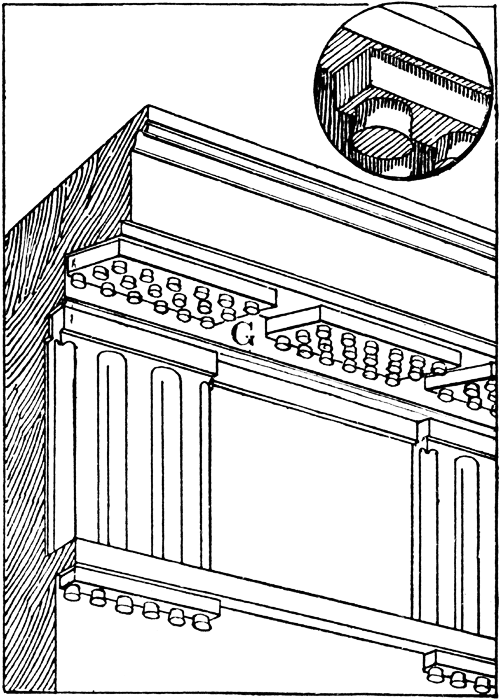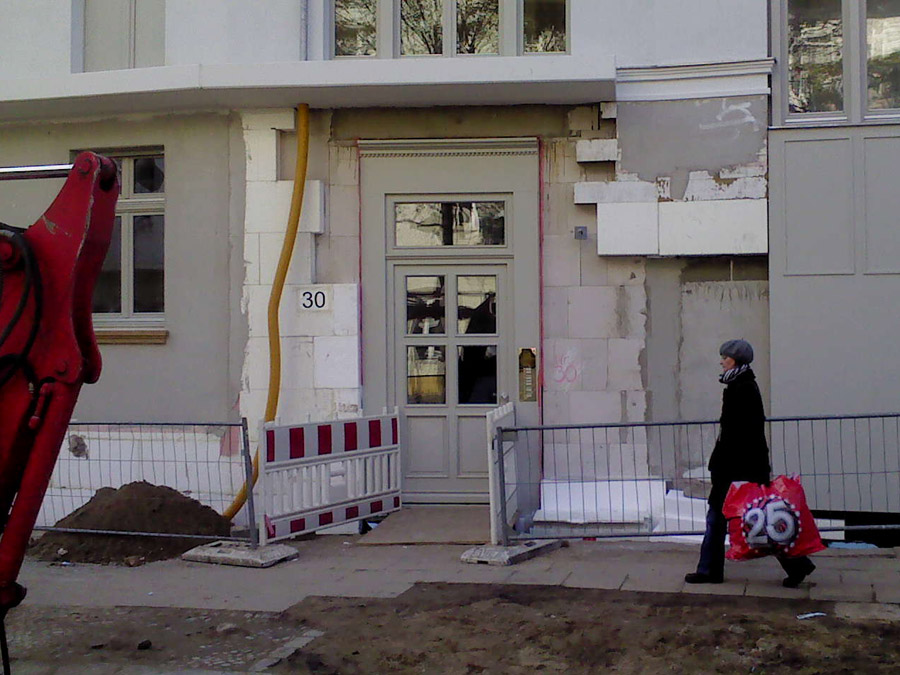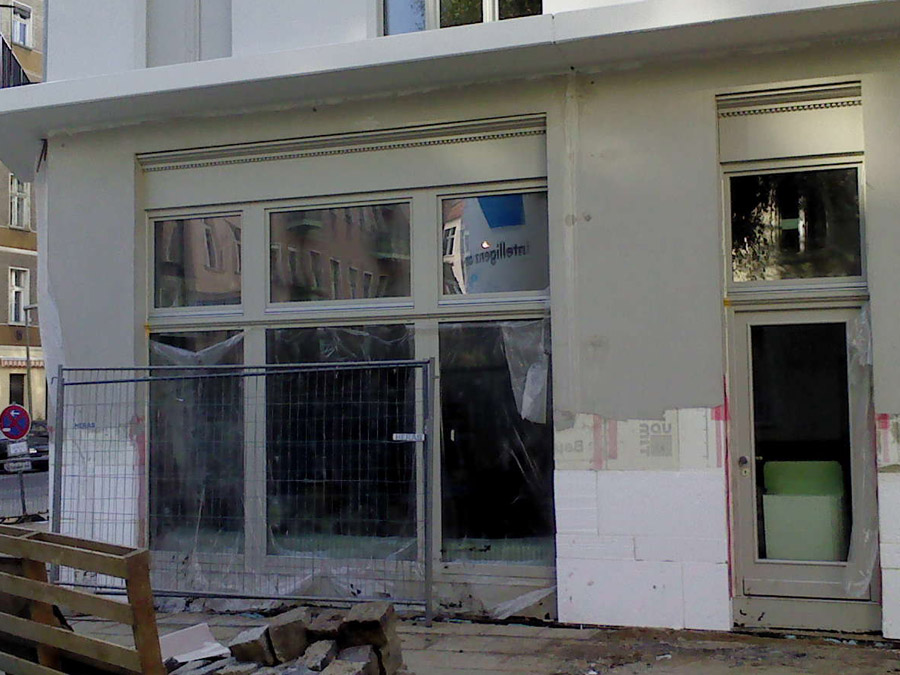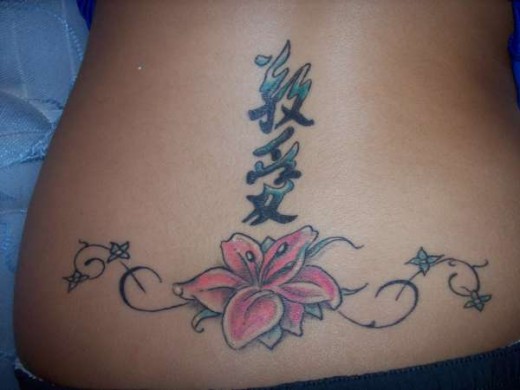You Guttae be Kidding
(The Pretense of Craft in Contemporary Construction, Part 1)
Decosterd and Rahm have a great reference to Nietzsche and his concept of a physiological art as part of the introduction to their book Physiological Architecture. Unfortunately, I don’t remember exactly what it is except that it was really hard to read (white print on white paper) and awesome, but trying to be more a blogger than an online magazine writer, I’m too lazy to look it up. Maybe you can look it up. Something about how an aesthetic experience can have a physiological effect on people. So perhaps for the only time in history, Decosterd and Rahm and Marc Kocher (Palais Kollerectable, and the building below, etc.) in one text. Carpe dieminis, or whatever.
I don’t want to end up a bitter man all alone, walking around with the eccentric shuffle of an orthodox Jew, whose bent frame and flapping arms serve the sole purpose of taxiing his brain from A to B, lamenting the decline of a once exciting city full of architectural potential. So I check my initial reaction, try an open mind. Yeah, maybe this is not so bad, he’s trying to loosen the strict Prussian window bands of Gründerzeit urban blocks. I want to have positive reactions to Berlin’s new buildings one is often too quick to bash. But I can no longer ignore the feeling of nausea spreading to my limbs from my gut, and I know this wobbly building is doing it to me. I mean, if this is origami (the architect’s project inspiration according to his website), then this pile of orange polyester construction netting might as well be Macramé. If I were mean, I might speculate that the origami spiel conveniently masks the fact that the developer one day value engineered any Italianate and expensive to build curves away with the highest arc segmentation setting in FunCad when the financial crisis hit. I want to sneeze, or cry, or puke, just flush it out, this physiological effect of an architecture that my entire aesthetic apparatus wants to reject and eject and purge.
I have to check myself. I must be getting carried away, here. But it’s there, undeniably, a visceral reaction, a feeling of having ingested something bad with my eyes, a dead oyster, some shady street food, too much cake, the fumes of a burning tire.
By God, what are these drops on the underside of the window’s top molding? (excuse the phoney pics, but if you look closely) Are they a 21st century aberration of Guttae?Towards the window’s bottom, the unfinished application of acrylic render reveals blocks of extruded polystyrene. You’ve got to be kidding. If I remember correctly, guttae are stylistic vestiges of a time when Greek temples were still built of wood thousands of years ago. Guttae originally were wooden nails that fixed the timber roof to the wooden architrave. It’s amazing that this little, millennia-old tectonic detail that pertains to craft, to things made by skilled hands as an expression of an architecture of assembly, has found its way onto a building made of goo, poured, spackled and sprayed together of concrete and polymers, and entirely not assembled, let alone by craft.
How did it all get so muddled? The Greeks started it, I guess, emulating wooden nails in stone, but that’s ok, they did it for tradition, and I assume they knew that they once were wood. Not sure what happened in between then and now. But here we have it, a renaissance of the wooden nail, on thermoplastic buildings, a haphazard stylistic reference to something whose meaning is entirely lost, the architectural equivalent of an Arschfax (see below), Chinese characters haphazardly applied on someone’s lower back for looks. Guttae (Greek drops) articulated as droops seems a lot more appropriate for an architecture of pouring. Make them gooey drops next time, please, make me chuckle, a more pleaseant physiological reaction to architecture.
Arschfax (German ass facsimile, often meaningless motifs applied as tattoo to someone’s lower back)
image courtesy: http://www.photofunblog.com/fashion/free-lower-back-tattoo-designs-for-women-2011-12/attachment/kanji-and-flower-free-lower-back-tattoo-collection/




